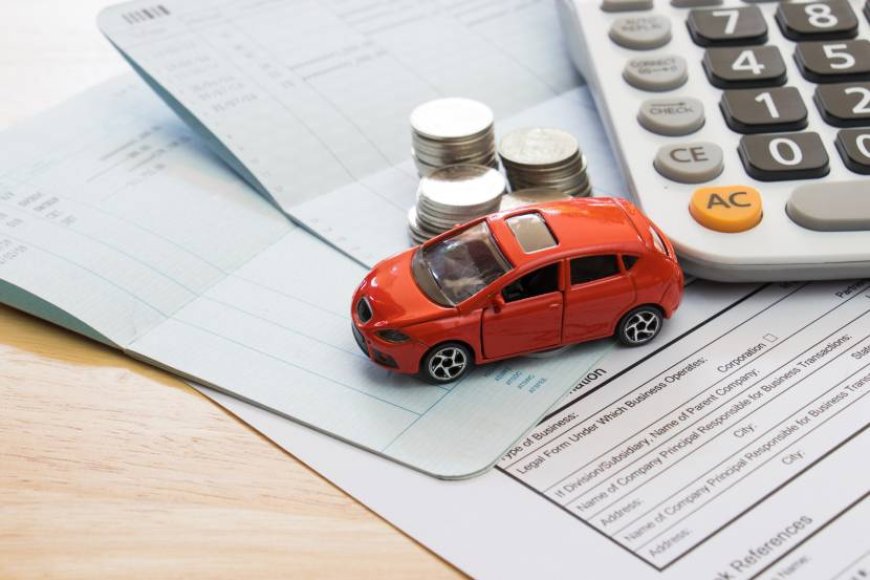Understanding Coverage Limits in Car Insurance Policies in Pakistan
Discover how to understand coverage limits in car insurance policies in Pakistan. Learn about different types of coverage, how to choose the right limits, and how they impact your protection and claims.

When it comes to protecting your vehicle and yourself financially, car insurance is a crucial consideration. Policies for car insurance in Pakistan vary widely, and one of the most important aspects to understand is coverage limits. Coverage limits dictate the maximum amount an insurance company will pay out for a claim. Here’s a comprehensive guide to help you understand coverage limits in car insurance policies in Pakistan and how they impact your protection.
1. What Are Coverage Limits?
Coverage limits are the maximum amounts an insurance company will pay for different types of claims. These limits are specified in your car insurance policy and vary based on the type of coverage you choose. Coverage limits help define the extent of protection you have and ensure that you are aware of the maximum compensation available in the event of a claim.
2. Types of Coverage Limits
Car insurance policies in Pakistan generally include several types of coverage, each with its own set of limits:
- Third-Party Liability Coverage: This is mandatory under Pakistani law and covers damage to third parties, including injuries and property damage. The coverage limit specifies the maximum amount the insurer will pay for claims made by others injured in an accident caused by you.
- Comprehensive Coverage: This provides broader protection, including damage to your own vehicle from accidents, theft, natural disasters, and vandalism. Coverage limits for comprehensive policies can vary significantly based on the policy terms and the value of your vehicle.
- Collision Coverage: This covers damage to your car resulting from a collision, regardless of fault. The coverage limit typically corresponds to the value of your car or the cost of repairs.
- Personal Accident Coverage: This provides compensation for injuries sustained by the driver and passengers. The coverage limit is often specified per person or per accident.
- Breakdown Coverage: Some policies include coverage for roadside assistance and vehicle breakdowns. Coverage limits can define the extent of services provided and the maximum amount payable for each incident.
3. How to Determine Adequate Coverage Limits
Choosing the right coverage limits involves assessing your needs and understanding the potential risks. Here are some factors to consider:
- Vehicle Value: Ensure that your comprehensive and collision coverage limits are adequate to cover the value of your car. Underestimating this can result in insufficient compensation in case of a total loss.
- Financial Capacity: Evaluate your financial situation and ability to cover costs out-of-pocket. Higher coverage limits can provide better protection but may come with higher premiums.
- Legal Requirements: Make sure you meet the minimum coverage requirements set by Pakistani law for third-party liability insurance. This is essential to avoid legal issues and penalties.
- Risk Assessment: Consider factors such as your driving habits, the likelihood of accidents, and the risk of theft or vandalism in your area. This can help you determine if additional coverage or higher limits are necessary.
4. The Impact of Coverage Limits on Claims
Understanding how coverage limits affect claims is crucial for managing expectations:
- Maximum Payouts: If a claim exceeds your coverage limits, you will be responsible for paying the excess amount out-of-pocket. This highlights the importance of setting adequate limits to avoid financial strain.
- Policy Exclusions: Be aware of any exclusions or limitations within your policy. Certain situations or types of damage may not be covered, affecting the overall protection provided by your policy.
- Deductibles: Coverage limits are often complemented by deductibles—the amount you pay before insurance kicks in. Higher deductibles can lower your premium but may increase your out-of-pocket costs in the event of a claim.
5. Reviewing and Adjusting Coverage Limits
Regularly reviewing and adjusting your coverage limits ensures that your insurance remains aligned with your needs:
- Annual Review: Assess your coverage limits annually or whenever there are significant changes, such as purchasing a new vehicle or experiencing changes in your financial situation.
- Policy Upgrades: Consider upgrading your policy if you find that the current limits no longer provide sufficient protection. This can be particularly important as the value of your car increases or if you require additional coverage.
- Seek Professional Advice: Consult with insurance professionals to help you understand coverage options and determine the appropriate limits based on your individual circumstances.
Conclusion
Understanding coverage limits in car insurance policies is essential for ensuring adequate protection and avoiding unexpected expenses. By carefully evaluating your needs, considering potential risks, and staying informed about your policy’s terms, you can make informed decisions and select coverage limits that provide the security you need. Regularly reviewing your insurance policy and seeking professional advice can help you maintain the right level of coverage throughout your vehicle ownership.

 Anokshi kumari
Anokshi kumari 










